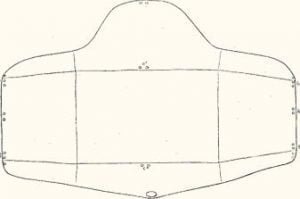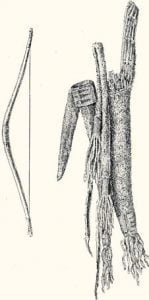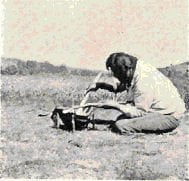Transportation of Plains Indians
Before the introduction of the horse, the Plains Indians traveled on foot. The tribes living along the Mississippi made some use of canoes, according to early accounts, while those of the Missouri and inland, used only crude tub-like affairs for ferry purpose. When first discovered, the Mandan, Hidatsa, and Arikara had villages on the Missouri, in what is now North Dakota, but they have never been credited with canoes. For crossing the river, they used the bull-boat, a tub-shaped affair made by stretching buffalo skins over a wooden frame; but journeys up and down the bank were made on foot. … Read more









